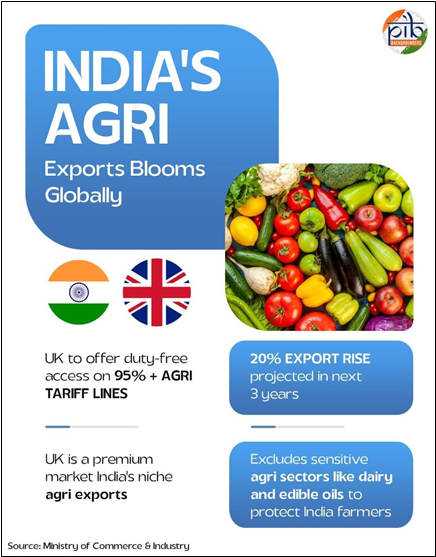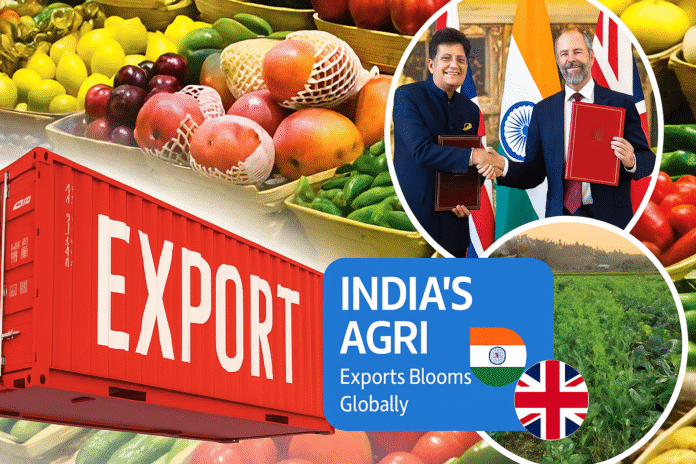In a small grape vineyard near Nashik, farmer Anil Patil looks hopeful. For years, he has grown table grapes, selling mostly in local markets and occasionally to domestic traders who export.
“We always heard about foreign markets paying premium prices,” he says. “Now, with this new agreement, it feels like those doors are finally opening for us.”
Patil is talking about the India–UK Comprehensive Economic and Trade Agreement (CETA), a landmark trade deal that promises to reshape the future of India’s agricultural exports. Signed by Commerce Minister Piyush Goyal and UK’s Jonathan Reynolds, in the presence of Prime Minister Narendra Modi and UK Prime Minister Keir Starmer, it’s being called one of the most ambitious trade steps for Indian agriculture.
What It Means for Farmers

For the first time, over 95% of India’s agricultural and processed food exports to the UK will enjoy zero-duty access. Products like ready-to-eat meals, spice blends, fruit pulp, pickles, baked goods, turmeric, and cardamom will enter UK markets duty-free—removing tariffs that earlier went up to 70%.
For farmers in Maharashtra (grapes, onions), Kerala (spices), Gujarat (groundnut, cotton), and the Northeast (horticulture), this isn’t just policy—it’s personal. Higher demand from a premium market like the UK can mean better prices right at the farm gate.
Guarding What Matters
The government, however, has been careful. Sensitive sectors—dairy, edible oils, oats, and apples—have been kept out of this deal to protect local farmers and ensure food security.
As Renu Devi, a spice farmer from Kerala, points out: “This balance is important. Exporting spices or grapes is good, but we also need to protect our core food crops. This deal seems to have done both.”
Why This Matters Now
Agriculture already accounts for 14.8% of all tariff lines in India’s trade structure, and processed foods alone hold a 10.1% share. Yet, India’s agri-exports to the UK were only USD 811 million, despite the UK importing USD 37.5 billion worth of farm goods globally.
This deal aims to bridge that gap. Officials estimate a 20% rise in agricultural exports over the next three years, bringing India closer to its USD 100 billion agri-export target by 2030.
Marine and Plantation Boost
Marine exports—shrimp, tuna, and fishmeal—are set to regain their footing with the removal of tariffs between 4% and 8.5%. For coffee and tea growers, too, the deal offers duty-free access to a market where Indian instant coffee will now directly compete with European brands.
For farmers like Anil Patil, this isn’t just about trade—it’s about recognition.
“When my grapes reach the UK, people will know they’re from Nashik. That name itself will mean something,” he smiles.
This is what CETA represents: a bridge between Indian farms and global markets, built with safeguards to protect food security while giving farmers a chance to earn better and diversify their produce.
From millets and organic herbs to high-value spices and processed foods, India’s agri-export basket is set to expand, opening new income streams for farmers while positioning India as a global agricultural leader.
Or as Patil puts it simply: “If the world wants our food, it should also help our farmers grow.”








